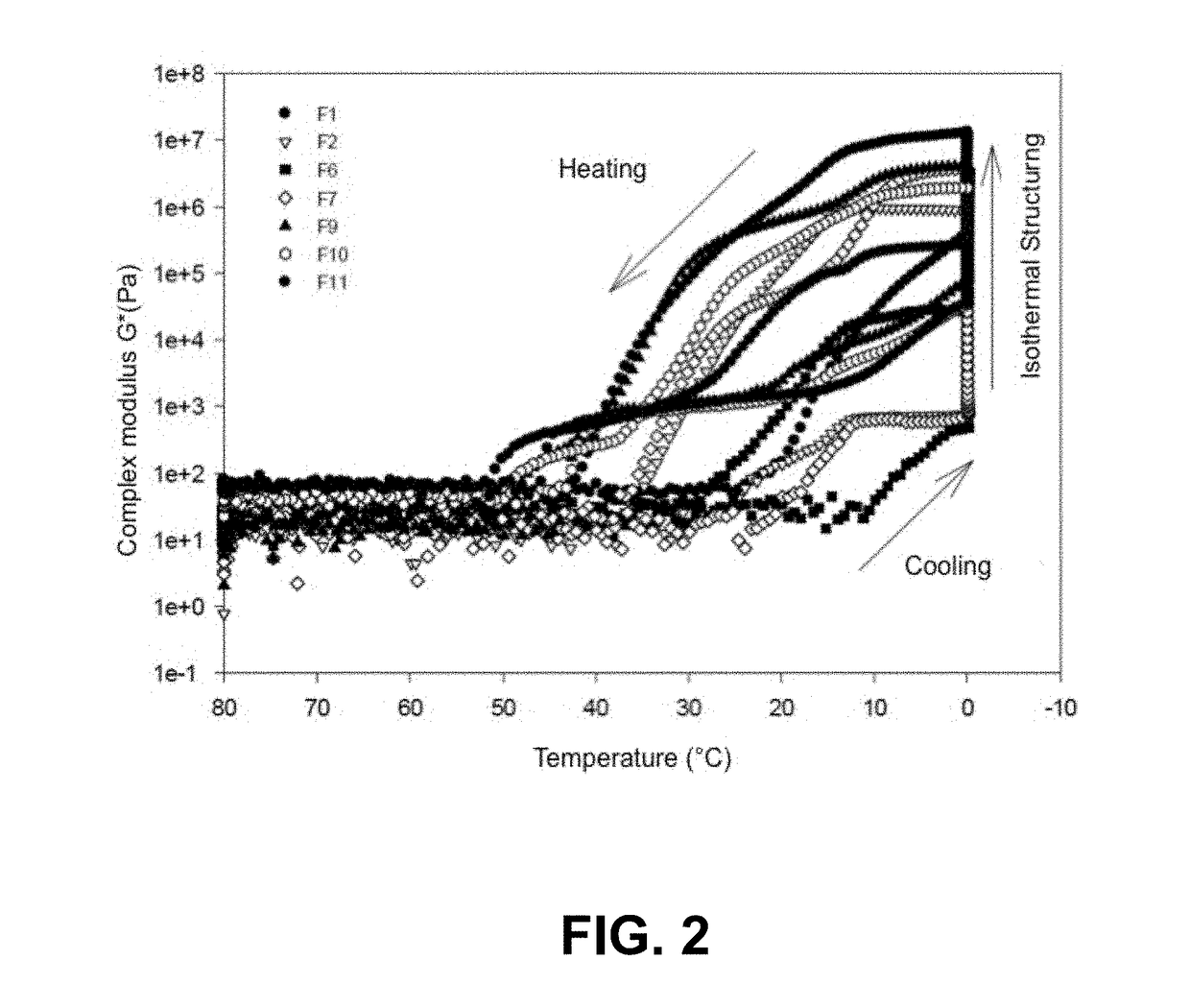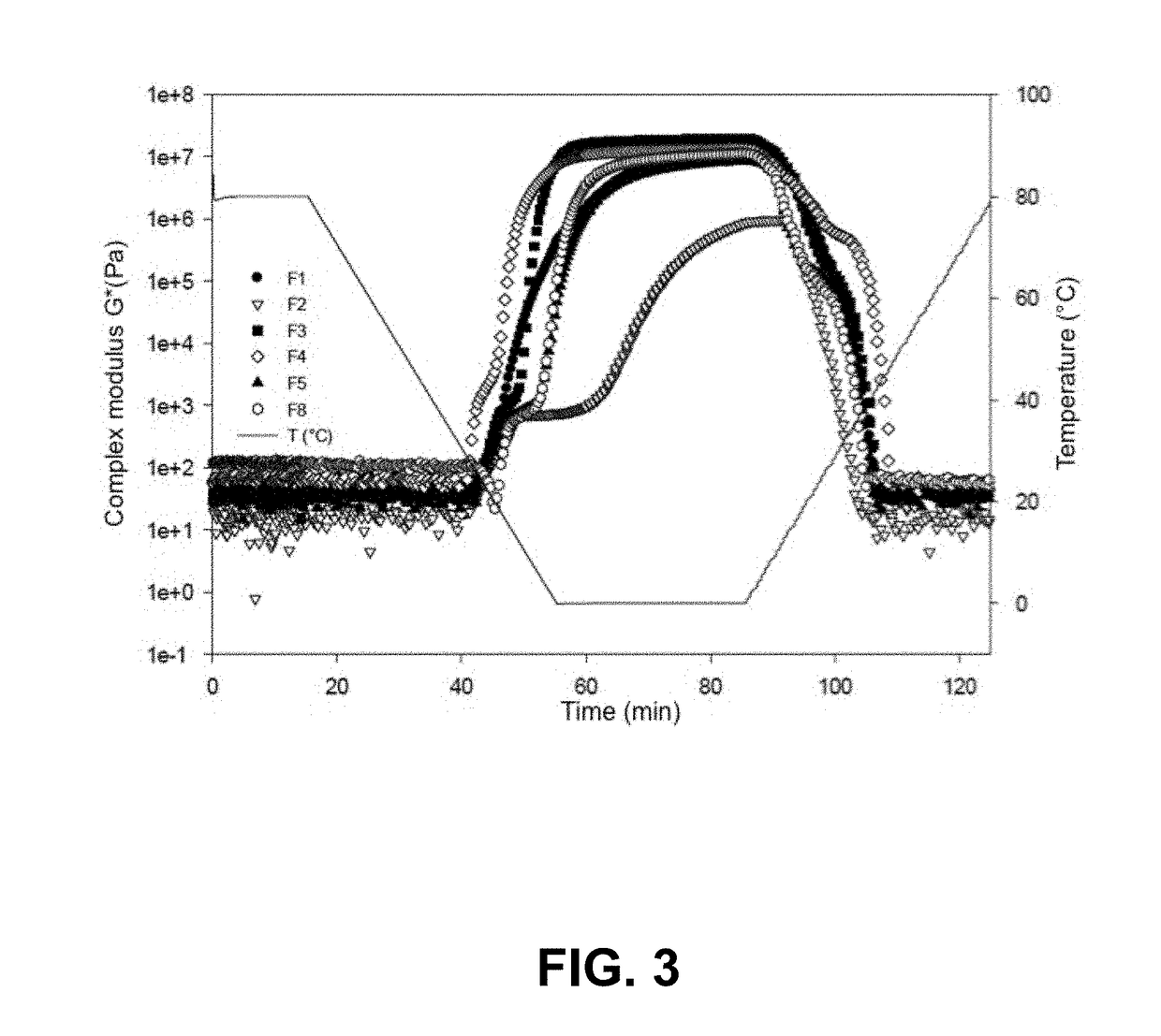Edible and thermoreversible oleogel and method for preparation thereof
- Summary
- Abstract
- Description
- Claims
- Application Information
AI Technical Summary
Benefits of technology
Problems solved by technology
Method used
Image
Examples
examples of embodiment
OF THE INVENTION
[0100]The invention will now be described with respect to the following examples, which are only for the purpose of representing the way to carry out the implementation of the principles of the invention. The following examples are not intended to be a comprehensive representation of the invention, nor seek to limit the scope of the same.
Examples of Compositions of Edible and Thermoreversible Oleogel
[0101]11 different examples of compositions of edible and thermoreversible oleogel were prepared, called F1, F2, F3, F4, F5, F6, F7, F8, F9, F10 and F11 according to the ingredients and quantities shown in Table 1 in accordance with the invention. The preparation consisted in the preparation of the mixture in % by weight and its subsequent fusion at 80° C. for 15 minutes to melt all the materials and mix them.
TABLE 1Examples of compositionIngredientF1F2F3F4F5F6F7F8F9F1011(Trade Name)Amounts in % by weightStearin (H15P1)0.000.000.005.000.000.000.000.000.000.000.00Soybean o...
example 1
[0111]Double Cream Cheese Production.
[0112]The process of incorporation the oleogel depends on the food where it will be applied. In the case of cheese the mass balance is applied according to the desired fat content and the oleogel is emulsified with a skimmed milk. Subsequently, the emulsion is mixed with another stream of fresh milk, skimmed or not, according to the desired fat content. Next the mixture is pasteurized and tempered at room temperature, curd is added and the necessary time is waited to mature the curd. Finally, the curd is cut, drained, salted, molded and the cheese is packed.
example 2
[0113]Production of Panela Cheese Low in Saturated Fat.
[0114]The method of preparation used as a raw material (1) vegetable soybean oil or canola oil; (2) fractional butterfat with a high melting point or vegetable soybean fat; (3) distilled monoglycerides of saturated fatty acids. For the preparation of the oleogel a mixture of oil, structuring grease, with proportions that may range from 70% to 95%, 5% to 25%, 1% to 5% by weight, and more preferably of 85%, 15% and 5% by weight, respectively. After mixing the ingredients, these are melted at a temperature preferably between 50° C. to 90° C., and more preferably at 70° C. until their complete dissolution. For the preparation 0,500 kg of the melted oleogel is mixed with 15 liters of skimmed milk at 50° C. Next, they are homogenized at a pressure of 500 PSI to 1500 PSI and mixed with other 15 liters of whole milk. Subsequently, the mixture is pasteurized at a temperature between 63° C. and 80° C., and more preferably at 75° C. Then t...
PUM
 Login to View More
Login to View More Abstract
Description
Claims
Application Information
 Login to View More
Login to View More - R&D
- Intellectual Property
- Life Sciences
- Materials
- Tech Scout
- Unparalleled Data Quality
- Higher Quality Content
- 60% Fewer Hallucinations
Browse by: Latest US Patents, China's latest patents, Technical Efficacy Thesaurus, Application Domain, Technology Topic, Popular Technical Reports.
© 2025 PatSnap. All rights reserved.Legal|Privacy policy|Modern Slavery Act Transparency Statement|Sitemap|About US| Contact US: help@patsnap.com



